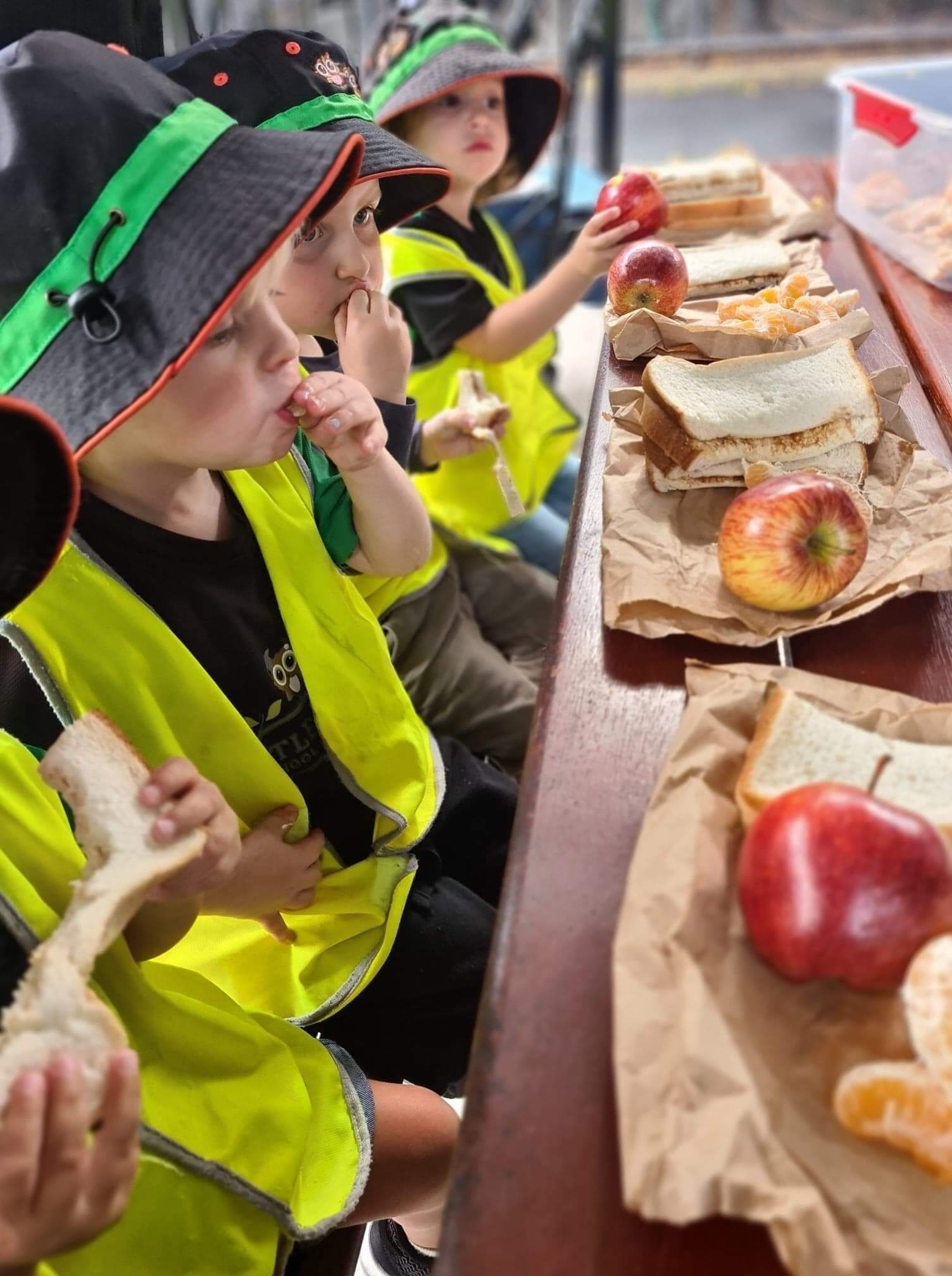Food ideas to get the approval and acceptance of your little food critic
We’re sure approximately 96.3 per cent of parents deal with a child who, let’s say, is choosey about what they want to eat. So choosey, in fact, they may choose to eat almost nothing you put in front of them. The amount of stress that puts on parents can be surprisingly strong. After all, as adults, we eat what we want, we understand benefits and consequences of what we put in our bodies, we understand when we’re famished and when we’re just not that hungry. But for some reason, when it comes to the little humans we’ve created, their diet can become a massive focus of parenting-what-did-we-do-wrong. You want so badly to make all the right decisions in parenting, to ensure your child is well-fed from a variety of nutritious sources so they can grow to be the healthiest, best version of themselves.
So how do we handle this picky phase – (though the term phase suggests it’s a short period of time when in fact it can be years or even a lifetime of challenging food preferences)?
We brought the village together and came up with some suggestions to ease the stress mealtime puts on everyone.

- Serve veggies first. Offering vegetables before bringing out the rest of the food can be a way to get children to scarf nutrients up before filling up on pasta and bread. For example, in Italian culture, it’s common to serve four courses, the antipasti which might include cold grilled vegetables, cured meats, etc, the primi, or first course, is where starch-based meals come into play, the secondi, or main course, is normally a protein-based dish such as fish, meat, poultry or eggs, and the cortorni, or side dishes, which are usually vegetables or even salad that accompany the second course. What we like about this is that a person’s hunger is slowly reduced, which could be a neat way to adapt into your family’s meal, Italian or not!
- Drizzle the veggies with salted butter. Butter makes veggies yummy and the fat helps little bodies absorb many nutrients better!
- A fun buffet! Enter, the chicken nugget bar. So yes, there’s chicken nuggets to guarantee your child will eat something, but offer a range of healthier dips for them to try that will add nutrients to their growing bodies. Think greek yogurt, hummus, beetroot dip or more. Bonus points if you can make vegetable nuggets and get them to eat those along with the dips. Speaking of dips, don’t nix dips, yes some of them may have ingredients you might question, but if said dips get your children to eat vegetables, why not give it a try? With homemade dips, you can also control the sugar or salt in them.
- Make it a game! Get your child to close his or her eyes and guess the colour of the food they’re about to taste. American radio producer Hillary Frank said this is the way she got her children to eat capsicum.
- Taste the rainbow. Form different coloured foods into a rainbow onto the plate, or try a drop of food colouring if you think they might be adventurous!
- A tried and often true classic is to sneak veggies in other foods – blended into pasta sauces, baked into muffins, pancakes, smoothies, etc.
- Ensure children are actually hungry. Additionally, offering a smaller main dish, such as a small portion of mac ‘n’ cheese, encourages them to consume more of their side dish, like garlic broccoli, as their hunger persists. This approach is both common sense and scientific evidence.
- Talk about how veggies make your body strong–and then after dinner have a jumping/running/skipping/whatever contest. It’s amazing how much higher you can jump after you eat all your broccoli (wink, wink)!
- Include food discovery outside of meal time. One UK study investigated the impact of a non-taste sensory activity program in a nursery school setting, involving children aged 12 to 36 months. Children in the intervention group engaged in activities focusing on looking, listening, feeling, and smelling unusual fruits and vegetables every day for four weeks. The results showed that these children were more inclined to touch and taste the vegetables they had been familiarised with during playtime activities, compared to a control group that did not participate in such activities.
- “We also turn eating into a game,” says educator Kristen from our ____ campus. “Using utensils as characters that make funny sounds (our class favourite is the ‘forklift’). Playing these storytelling games during meals not only enriches our caregiving but takes the pressure off the child.”
- Use a veggie discovery chart! Studies show that it can take a child anywhere between 7 to 20 exposures to a certain ingredient before they start to feel familiar with that food, so by putting stickers every time they are exposed to a vegetable on this list, that helps their exposure. If they didn’t like it, they can put a red sticker; if they liked it so-so, they get to put a yellow sticker; and if they loved it, they get to put a green sticker. The loves can help parents put successful meals together! You can find a veggie discovery chart here.
- Roast vegetables with something sweeter. Children have more taste buds and a sharper sense of taste than adults, which may explain why they often find the slight bitterness in many vegetables more pronounced. Our evolutionary instincts to avoid bitter flavours, once a protection against poisonous substances, can make it challenging for little ones to appreciate these tastes. However, vegetables are incredibly beneficial and can act as a form of preventative medicine. To make veggies more appealing to children, try adding a bit of brown sugar or maple syrup to roasted vegetables. Other tasty additions could include a vinaigrette, yogurt, butter, lemon juice, or tomato sauce making the vegetables more palatable and encouraging children to try new foods.
- Some parents have great success with making a little plate of veggies and serve as an “appetizer” while parents finish preparing dinner. Children are usually hungry and need a distraction. This way they fill their tummies first with healthy foods. Or be playful about it and ask the children to watch the plate, but under no circumstance are they to have any. And if they take one, be dramatic with your ‘NO NO THOSE ARE MINE ONLY’ response, which will probably result in giggles and more ‘sneaking’!
- Healthy breakfast pancakes! Who says vegetables have to be for lunch and dinner? Check out this recipe.
- Reduce snacks or morning/afternoon teas. Part of the culprit might be your child is already full for the day by the time they get to dinner, so they’re selective in what they’ll eat on their plate because they’re just not very hungry.
- “When my cousins and I were children, our parents would try to get us to eat broccoli, they would say they were ‘little trees’ and we would all pretend we were giraffes to eat the broccoli. It worked!” Jell, social media and marketing specialist.
- Why stick to traditional cutlery? Try letting your child skewer bite-sized food on toothpicks or using chopsticks. Your child might have a lot of fun and actually eat the veggies, meat or whatever they don’t normally try.
- Re-Package, Re-Spin, Re-Brand. Think of yourself as the mastermind behind a food marketing campaign, where your toughest critics are pint-sized food connoisseurs. To make a food they’re not keen on seem more appealing, give it a humorous twist. For example, if carrots are a no-go, try calling them ‘X-Ray Vision Sticks’, suggesting they’re the secret behind superheroes’ sharp eyesight. The idea is to weave a bit of storytelling and humour into meals, transforming mundane foods into characters of a whimsical, edible tale

19. If you have the creativity and the time, present the food into characters, scenes or animals your child likes. Search for ideas on Pinterest or Instagram!
20. Don’t answer the question ‘what’s for dinner’. Come up with a silly answer such as “bugs and onions”, or something obvious ‘food’, but don’t give them time to dread dinner.
21. In Piaget’s developmental stages, there’s a phase known as the preoperational stage, where a child’s understanding of conservation is still developing. For example, if you pour juice from a short, wide glass into a tall, narrow one, they might believe the tall glass contains more juice because it looks “bigger,” even when they see the pouring happen. This concept can be cleverly applied to serving vegetables to children. By arranging the veggies closer together, they seem “smaller” to the child, giving the impression that they’re eating less. Conversely, spreading out items like chicken nuggets can create the illusion of a larger portion, making mealtime a bit more appealing to them
22. Everyone at the table eats the same meal, but try to include one item everyone likes. No alternatives, or if you have to, make the alternative something like veggie sticks and hummus. Eating together as a family is also a great way to bond and create lasting memories.
23. The one-bite rule: say something like, “Remember the time you didn’t think you’d like cherries, but you did? Let’s try this sweet potato now, because you might like it. Once you try it you can say, “No thank you!” but you have to at least try it! Then that food is no thank you food.”
24. The ‘silver bowl snack’ to expand their palate, one tiny taste at a time. If your child doesn’t like something, say something like, “well your tastebuds must not be grown up enough for that yet, let’s see what happens next time you try it.” Since children often want to be more “grown up” they may willingly try the offending food again the next time it was offered. If the child decides to try it, make a big deal about how grown up your child is getting.
25. Keep pre-cut vegetables and fruits in a bowl or clear Tupperware container, front and centre in the fridge and — important — then place some on a platter on the kitchen counter in your child’s line of vision all afternoon.
26. Do your children like mashed potatoes? Get more veggies in there! If the mashed potatoes turn green? Well, they’re Hulk potatoes obviously. Are they orange? Then they’re Nemo or insert-your-child’s-favourite-orange-character-here.
27. “We get our children to pick a meal they want to eat for dinner for the week and we buy the ingredients then they all get a night to cook dinner for us, makes them interested in wanting to eat the meal they make for us, and they need to choose something with a minimum of two veggies.” Jess, enrolments officer.
28. Sprinkles also go a long way. Yes, actual sprinkles, or foods that they can shake on like sprinkles. Think seasonings, herbs and chia seeds. If a child doesn’t like the food presented, ask what you can add to make it more exciting. And let them do the sprinkling. Sometimes, it really is as simple as that.
29. While it’s easy to use a smartphone or TV to occupy your child’s attention and you might even see your child mindlessly eat, that’s actually not what you want. You want children to be focused on the food, but also focused on family time and conversation.
30. Relax! Try not to put pressure on them to eat. You wouldn’t want someone constantly commenting on your plate choices and habits. Mel, operations manager of Little Scholars, said her son has been picky since he was two years old. When she spoke to a nutritionist, she said “as long as he was eating 20-25 different foods throughout the week he would be OK.” While it can feel stressful, your child is likely getting the nutrients they need, whether you’re offering fresh, frozen, tinned foods, you’re trying your best, your child is flourishing, and one day, this will just be a memory!



